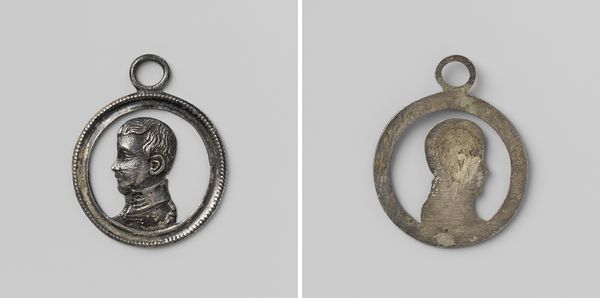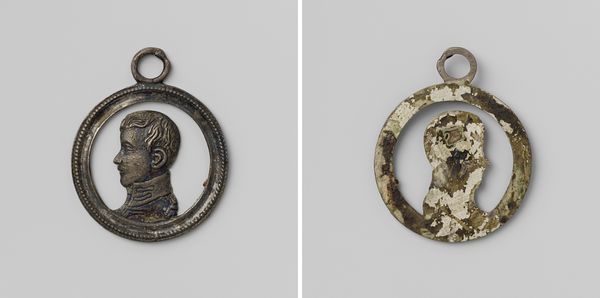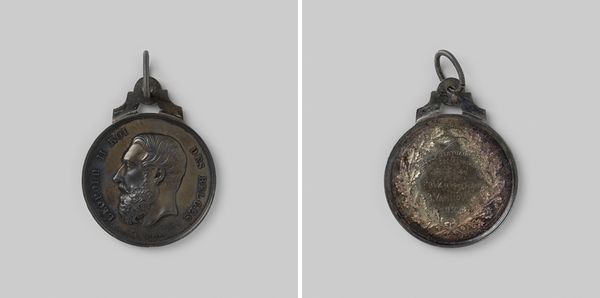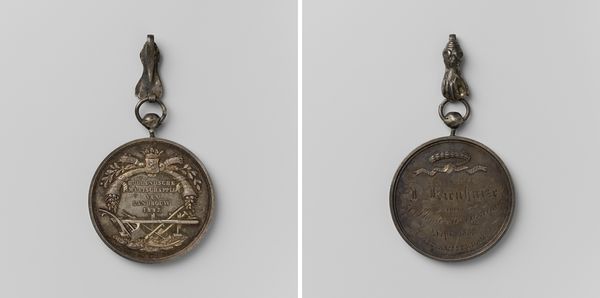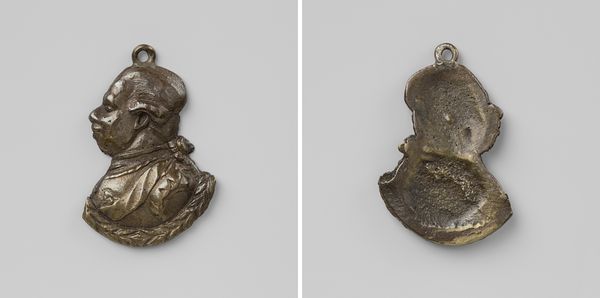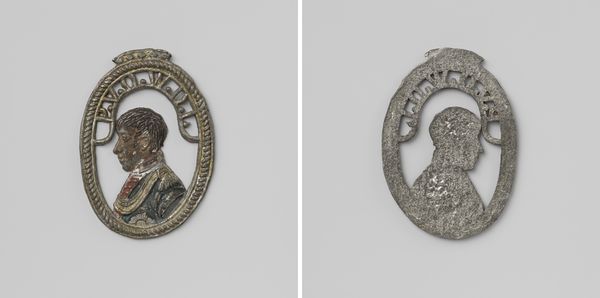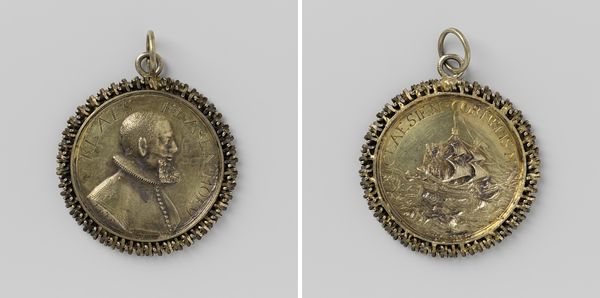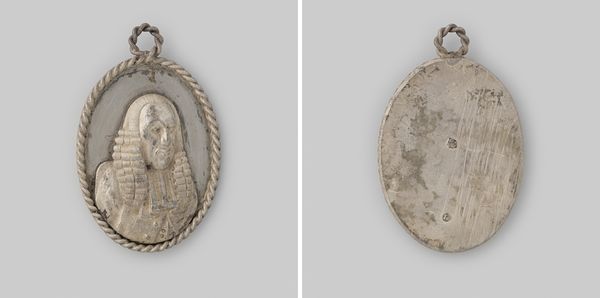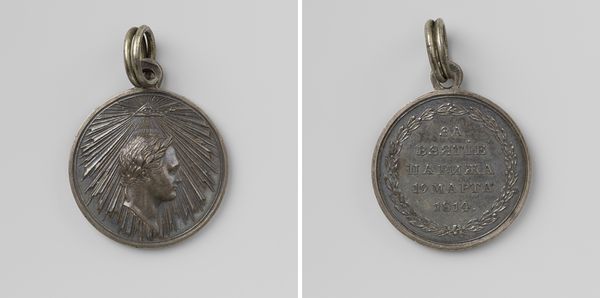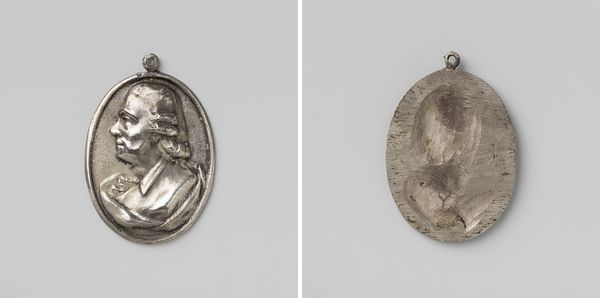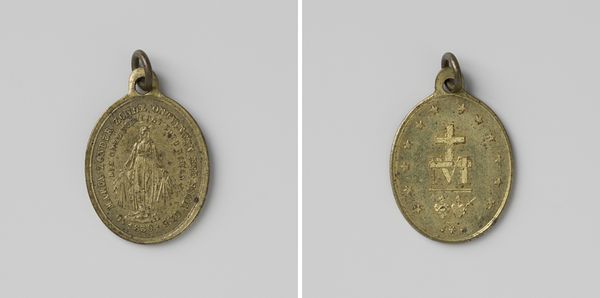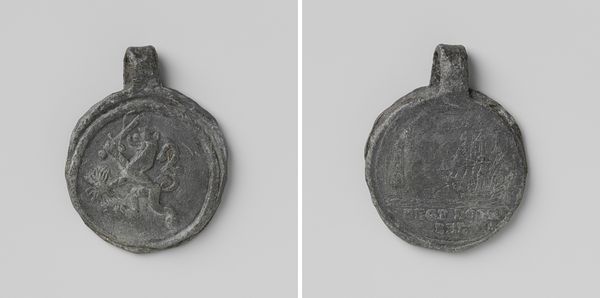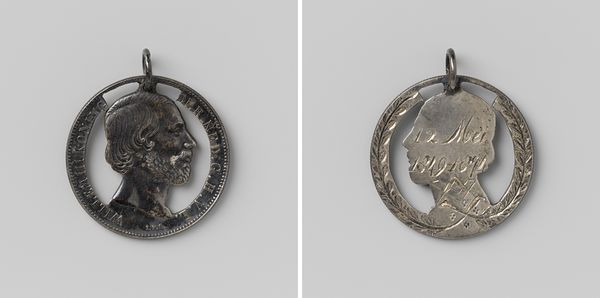
metal, sculpture
#
portrait
#
neoclacissism
#
metal
#
sculpture
#
history-painting
#
miniature
Dimensions: length 3.7 cm, length 3.1 cm, width 2.7 cm, weight 3.55 gr
Copyright: Rijks Museum: Open Domain
Curator: What a striking little piece! We’re looking at a metal miniature portrait from 1813, depicting Willem Frederik, Prince of Orange-Nassau, sovereign prince. It's housed right here at the Rijksmuseum. Editor: Hmm, austere, isn't it? It feels...weighty, despite its obvious size. A bit cold, perhaps due to the metal and the Prince's stern profile. Curator: Absolutely. The neoclassical style here lends itself to that stoicism. The piece served, essentially, as political imagery—intended to project power and legitimacy at a pivotal moment in Dutch history, after the Napoleonic era. Editor: Right, I get the message. But I find myself wondering what the Prince *felt*. All I get here is carefully crafted projection, that controlled profile repeated on each side. You know? Did the artist even try to capture something beyond that royal bearing? Curator: I suspect that’s secondary to the primary goal here. The metal is the message—durable, lasting. This isn’t so much a psychological portrait as it is a symbolic representation of restored sovereignty. Consider also the purpose of miniature portraits from this era—keepsakes of the wealthy, small scale yet densely meaningful. Editor: Keepsakes of the wealthy…like owning your own little piece of royalty. Even the frame, with its coiled-rope look, hints at something precious, enclosed, maybe a touch nautical, suggesting the Netherlands’ powerful trade history? Curator: I like your read of that. The frame emphasizes enclosure, power contained. It also reminds us of global connections. The metal itself – likely silver or perhaps pewter – speaks to resources, trade, Dutch affluence in that time. Each element supports that broader narrative. Editor: So it all clicks into place. It makes me appreciate how objects, even small ones like this, can carry such weighty narratives, beyond a face in profile. Still cold though. But I appreciate its little narrative weight after looking a little longer. Curator: Indeed. A compact expression of power and politics, rendered in metal. It captures more than a likeness; it encapsulates a crucial historical narrative in miniature.
Comments
No comments
Be the first to comment and join the conversation on the ultimate creative platform.
